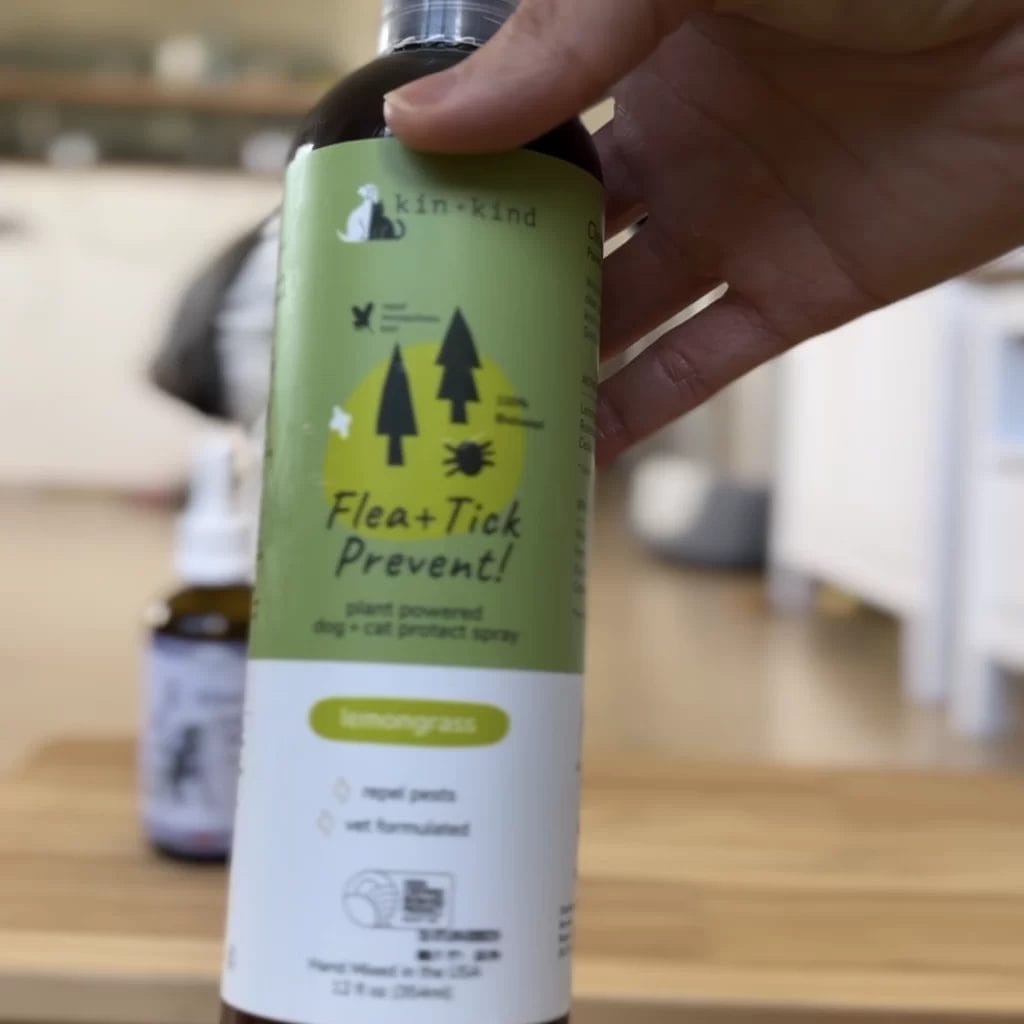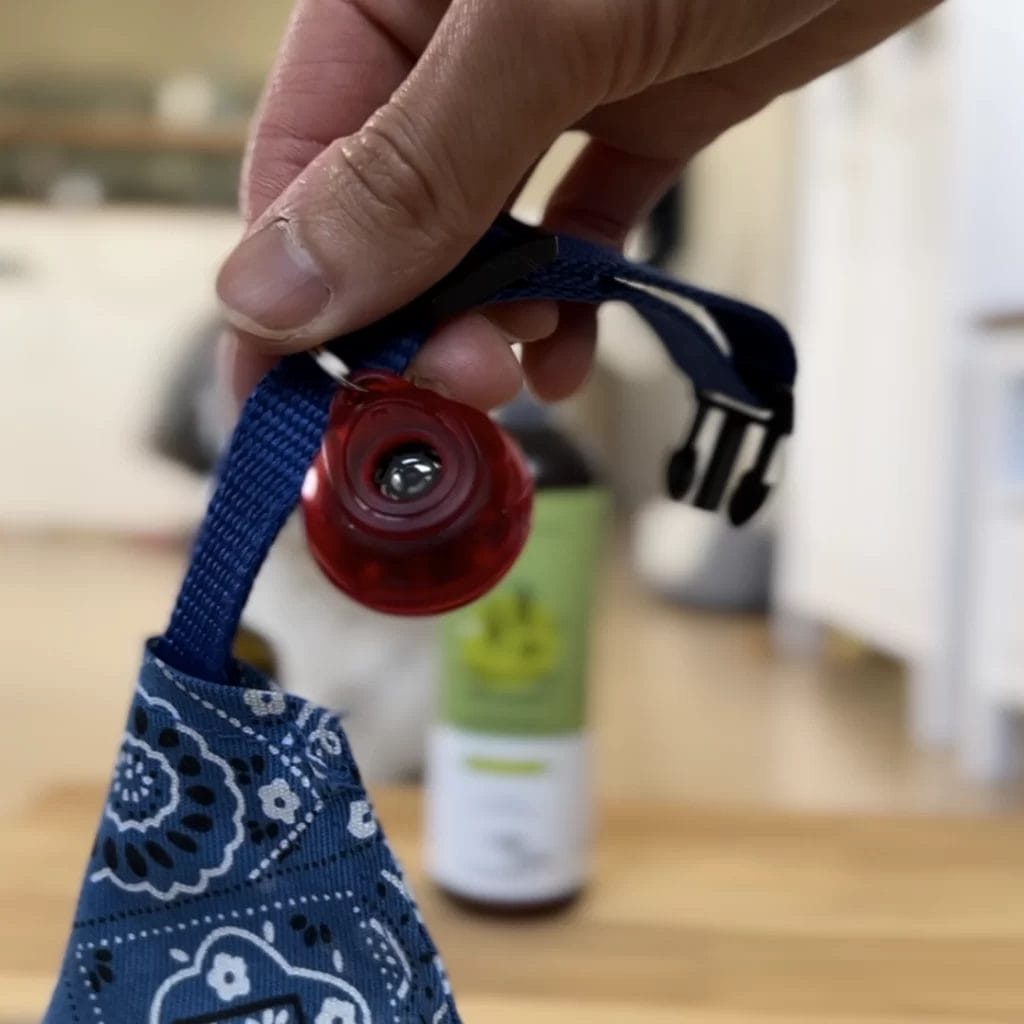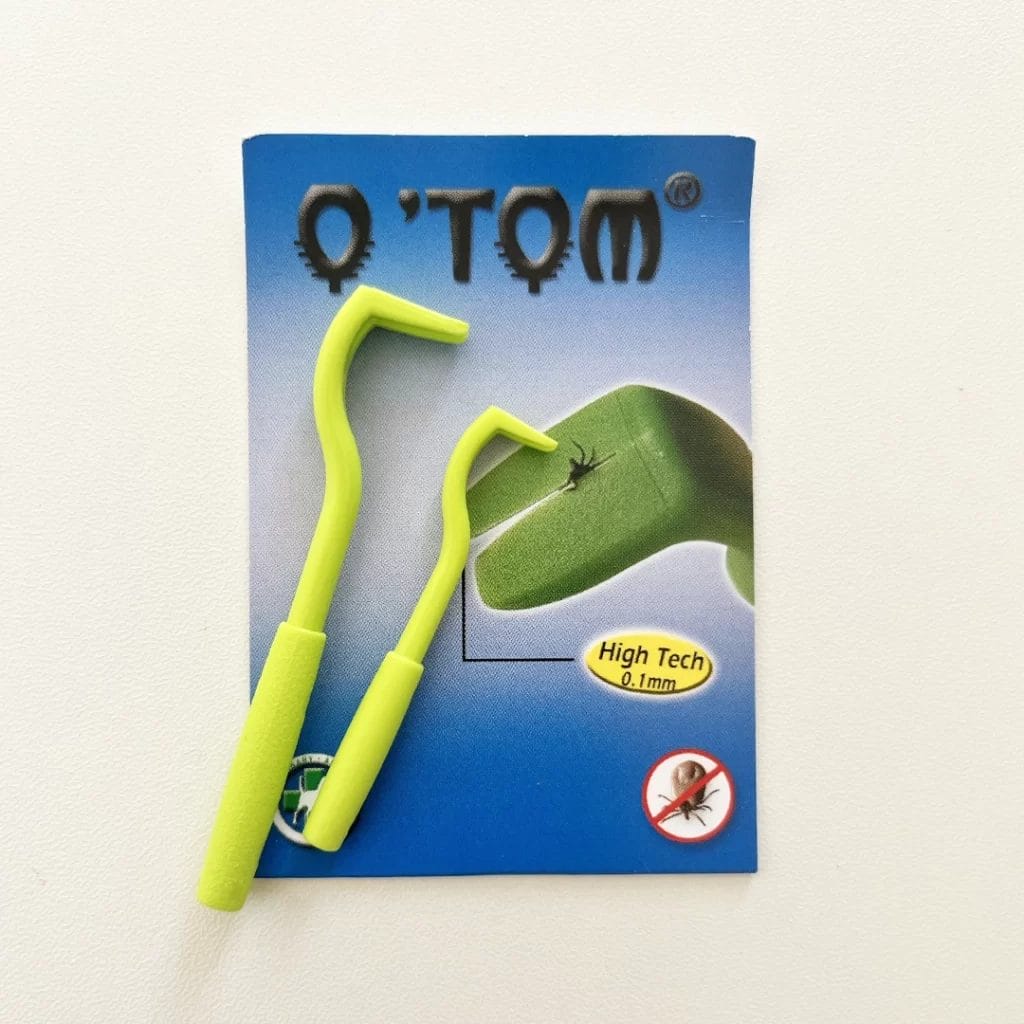How Do I Prevent Flea and Tick for My Shih Tzu? (Real Experience)
Have you ever freaked out seeing a tick on your Shih Tzu?
I did.
I remember the first time I saw a tick attached to my Shih Tzu, Billy, I totally freaked out. Without any proper tools at home that can remove the tick, I almost went to the emergency vet. (Yes, I was at THAT level of freaking out because I just want the tick out of my dog’s body asap.)
Ticks are every pet parent’s nightmare. Not only they are gross, but they can also spread serious diseases.
For many pet parents, the go-to solution is conventional preventive medications. But as you may know, these medications are pesticides. They make your dogs’ blood toxic, so when ticks (or fleas) bite, they die from exposure to these pesticides.
I refuse to use pesticides on my dog as they are neurotoxins. They kill parasites for sure, but they don’t prevent the bites. And worst, they are in the dog’s bloodstream, affecting the nervous system as well.
So, I’ve explored natural remedies to keep ticks at bay. And…
I am sharing them in this article. Hopefully, they can help your dogs too.
Let’s jump right in!
Personal Experience with Ticks on My Shih Tzu

A bit of the backstory. When I first got Billy, we lived in Zurich for a little over a year.
Although I had the idea of ticks’ presence, we had never encountered one. So, naturally, we never had to apply any products.
My concept was that ticks are usually present in tall grasses or warm, moist areas where no one mows the lawn.
As you may know, in Switzerland, there are many landscapes. We went many times to the forests without prevention. (I am not saying it’s safe, but that’s just the fact.)
So, when we later moved to the Czech Republic in winter, the tick problem was never on my mind.
The day I found a tick on Billy’s body. We did not go somewhere unusual. And we did not have any tall grass around the neighborhood.
At night, as I groomed Billy like any other night, I found the tick attached to his neck.
Tick season can be all year round if your area is tick-dense. The vet we talked to said she’s removing ticks the whole year since the overall weather now is not cold enough to make them sleep.
After this first incident, I’ve been hyper-vigilant.
But one day, I forgot to apply the prevention. And we came home with 7 ticks crawling on Billy’s hind legs after a 1-hour walk.
Luckily, none was attached.
Since then, tick prevention has been non-negotiable. I apply a protection tonic each morning and spray him EVERY time we step out of the door.
I summarised the following 4 ways I use to prevent ticks for my dog. So far, it’s been a success. Hope they are helpful to you too!
Bonus: Download FREE Shih Tzu Herbal Tea Handbook ➔
4 Steps Safe & Effective Natural Flea And Tick Prevention for Your Shih Tzu
1. Essential Oils
My first layer of defense is essential oils. They are known to be effective in repelling insects and parasites.
You can choose from many, including lemongrass, cedar wood, thyme, peppermint, lavender, and more.
All of these are useful, but among them, I like rose geranium oil the most. It smells good and is like a rosy fragrance for my dog.
I have been using this protection tonic from a Swiss brand called Yaspis every morning. It contains essential oils from rose petals. The texture of this tonic is watery, not oily at all. (I do NOT earn any commission suggesting this product.)

When using essential oils, make sure to dilute them. They are concentrated and very potent. If you apply them directly, it can burn the skin. To avoid any mistakes, I prefer to pick blends that are ready to use.
2. Repellents and Sprays for Dogs
For extra protection, I always use spray before heading out with Billy.
For sprays, I only choose those with natural ingredients. Please read the ingredient list carefully because many of them contain pesticides. Dogs love to groom themselves. And the last thing I want is for any dog to ingest these toxic chemicals.
Plus, using pesticides can pollute the environment and make insects more resistant in the long run. It becomes a vicious cycle that we can only use stronger pesticides.
I have been using this Kin + Kind Flea and Tick Spray. This is suggested by a few holistic vets I follow. (I do NOT earn any commission suggesting this product.)

I also use an electronic repeller. It supposedly emits ultrasound that humans and animals can’t hear, but ticks and fleas (mosquitos as well) can’t stand. (I do NOT earn any commission suggesting this product.)

Well, I’m not entirely convinced it works, I figure it can’t hurt to give it a try for some added peace of mind. Anyway, I still hang it around Billy’s collar.
3. Garlic
All of the above tools I mentioned are external. Let’s talk about a natural way you can do it internally to make your dog less appetizing to the parasites – garlic.
Garlic may have a bad reputation.
Back in 2000, there was a study1 that claimed garlic was harmful to dogs.
But the problem is: the researchers fed an absurd amount of garlic extract to dogs. They gave 10.5 oz of garlic extract to a 60 lb dog, which is equivalent to 4 to 5 full heads of garlic.
It would be absolutely stupid for anyone to give that much garlic to any dog.
Later, new research came out in 20062 suggesting that small doses of garlic are safe for dogs. It confirmed garlic has anti-inflammatory properties and the ability to fight off parasites in the gut for dogs. The idea is that when dogs consume garlic regularly, their skin and fur emit a scent that fleas and ticks hate.
Before I found ticks on Billy’s body, I occasionally fed garlic to Billy. So, I can’t say for sure if it worked, many dog owners swear by it.
If you decide to try garlic, make sure you chop the fresh garlic and let it sit for at least 10 minutes before feeding.
Also, be cautious with the dose:
1/8 tsp for 5 lb dog
1/3 tsp for 10lb
1/2 tsp for 15 lbs. 1/8 tsp for 5 lb dog
1/3 tsp for 10lb
1/2 tsp for 15 lbs
Bonus: Download FREE Shih Tzu Herbal Tea Handbook ➔
4. Daily Grooming Care
Sure, we’ve got all these preventive measures, but they’re not guaranteed.
Ticks (or fleas) might still find their way onto your dogs despite your best efforts. The only way you can get rid of ticks 100% is your daily grooming – to check and brush the coat.
The few times I found ticks on Billy were during our nightly grooming routine.
First, I run a brush through his coat to get rid of any dirt and mats.
Then, I go over it with a comb to make sure the coat is smooth without any insects or parasites attached.
If you want extra security, you can use a flea comb to go through the coat one more time.
I believe those 10–15 minutes of grooming each day can make all the difference in keeping your dog tick-free.
5. Additional Tips
Let’s wrap things up with a few extra tips.
First, avoid tall grassy areas when you’re out with your dogs. Areas that grass up to your ankle are like a hotspot for ticks just waiting to hitch a ride.
And when you come back after walks, always give your dog a thorough coat check.
Worst case, if you find any tick attached, remove it with this tool specifically designed to remove them.

But hey, at the end of the day, if you do all the preventive measures we’ve talked about, your dog should be in pretty good shape.
So don’t sweat the small stuff – accidents can happen. And I know you always try your best to protect your dog. That’s all that matters.
Why Many Shih Tzu Parents Are Turning To Safer, Natural Flea And Tick Prevention
If you have been following our story, you probably already know where I stand on conventional flea and tick oral medications.
Now, let’s get one thing straight – I am not bashing any brands or judging anyone who uses these medications.
I want to point out what these chemicals are and show you that there are gentler, more natural alternatives out there.
Conventional Flea and Tick Medication – Not safe to use!
When you are looking for flea and tick preventatives whether on the Internet or at a vet office, they usually suggest your dog take oral tablets or collars.
I quickly Google a few flea and tick oral medications and look up their ingredients.



If you ask again, Hey, Google, what are these? It will tell you…
So, How Do They Work?
They are pesticides that belong to the isoxazoline class chemicals.
According to MSD Veterinary Manual3,
“Isoxazolines are a new class of synthesized chemicals… (that)…bind to the chloride channels in nerve and muscle cells, which blocks the transmission of neuronal signals. Eventually, affected parasites are paralyzed and die…
…In September 2018, the US FDA alerted pet owners and veterinarians that isoxazolines, including afoxolaner, fluralaner, sarolaner, and lotilaner, can have neurologic effects in some dogs, such as muscle tremors, ataxia, and seizures.”
ByRamesh C. Gupta, DVM, PhD, DABT, FACT, FACN, Toxicology Department, Breathitt Veterinary Center, Murray State University; Robin B. Doss, Breathitt Veterinary Center, Murray State University
Reviewed/Revised Aug 2022
So, the isoxazoline chemicals are ingested and absorbed into the bloodstream.
When ticks or fleas bite and draw blood meal, these neurotoxins disrupt their nervous system, making them paralyzed before finishing the blood meal. It is undoubtedly effective (still to this day).
But does it sound safe for animals to EAT these pesticides?
What is the problem?
The problem is: Even though they claim to target only insects, the effects also on animals cannot be ruled out.
Some (actually many) dogs suffered adverse reactions such as skin irritation, vomiting, diarrhea, and neurological issues after using these products.
Well, I might not be the right person to listen to. But if you are interested, join this Facebook group where you can find plenty of similar stories.

Again, I am not judging. I am also guilty of handing my dog once without understanding what it is.
Let’s focus on what we can do if our dogs had used them.
Bonus: How to Help Your Dog Detox?
Whether your dog has these chemicals in the system, a detox plan is only beneficial.
Here are a few herbs and foods that can aid in detoxification:
- Milk Thistle
Known for its liver-protective properties, milk thistle can help support liver function and eliminate toxins from your dog’s body. - Burdock Root
This root vegetable is rich in antioxidants and can help purify the blood and remove toxins from the body. - Coconut oil
Coconut oil contains fatty acids that support overall health and can help boost the immune system during detoxification. - Chlorella
This freshwater algae is packed with chlorophyll, which can help remove heavy metals and other toxins from your dog’s body. - Kelp
kelp, rich in iodine, can help support thyroid function and promote detoxification. - Dandelion
Dandelion is a natural diuretic that can help flush out toxins through the kidneys and urinary tract.
TIP: Besides these, there are more dog-friendly herbs. One example is chamomile! It is a versatile herb that can help with many common issues in dogs.
Bottom Line
Every pet owner needs to face the flea and tick problem somehow. It’s most likely a never-ending battle. And there’s no one-size-fits-all fix. The key is to choose a more natural way with minimal side effects.
Let’s keep our dog safe and healthy, one step at a time.
How do you naturally repel fleas and ticks? Please share with me!
NOTE: This article is intended to inform, not to replace any veterinarian medical advice. If you are in doubt, be sure to do a lot of research and consult with experts to find out what will work best for your dog.







